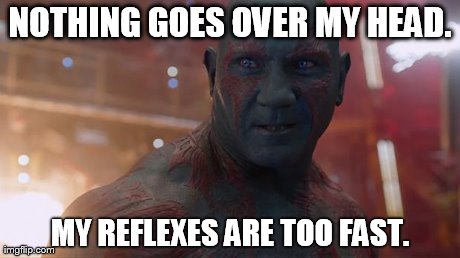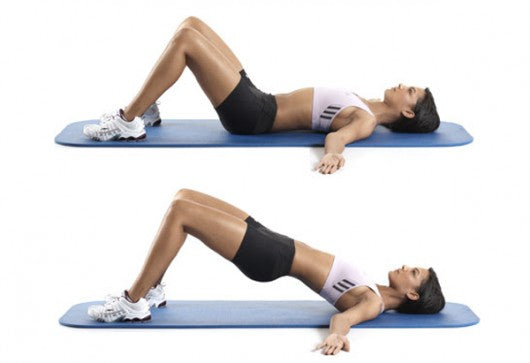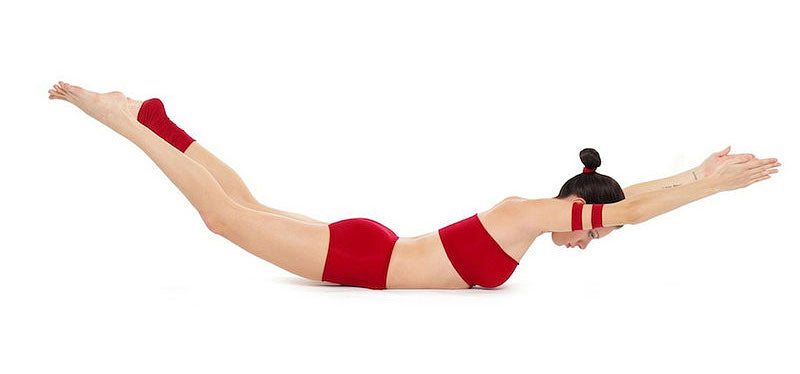The Riders' Blog
Seven Killer Off-Season Interval Workouts for Equestrians December 02 2015
If you're like me, the off-season kind of looks like this. You manage to ride and/or workout pretty much every day in October. November rolls around and you still manage to get out there every second day. By the holidays, you're lucky to work out once a week. You rally after New Years', but it's always an uphill battle to get into show shape by the Spring.
There's an air of inevitability about this, but there doesn't have to be. Winter is cold and dark, and it can be a struggle to schlep your way to the gym - so here's a full week's worth of at-home (or at the gym) workouts for any equestrian looking to get fitter in the off-season.
1. Butt Day
That's right, it's butt day. If you want to sit the canter without bouncing around in the saddle like a sack of potatoes, strong glutes are a must. So here's a quick interval training workout you can do to strengthen your butt, with no equipment needed.

2. Upper Body Day
Riding is surprisingly demanding on your upper body. And your back and obliques are particularly important for keeping your posture on point as you ride. This workout is pretty demanding, so make sure you take short breaks during sets if needed. Prioritize maintaining good form over doing exercises quickly.

3. Sweaty Cardio Day
Full disclosure: this workout is pretty real. It'll run for about 30 minutes, and you'll be struggling pretty much the whole time. BUT it's a full body workout and it'll burn a ton of calories. And as with any other tabata or anaerobic workout, you'll keep burning calories for up to 24 hours after you're finished.

4. Lower Back Day
Great news! You've earned a day off. Everyone needs at least a day or two off every week, even total workout monsters. And if you've been working out and riding regularly, chances are your lower back gets pretty tight. This is a nice, easy stretch and light workout to help loosen up your lower back.

5. Core Day
For any rider, strong core muscles are a must. They're the difference between a rider who looks (and feels) in control, and a rider who looks like a piece of overcooked linguini. And as countless infomercials have probably told you, crunches are boring. So here's a complete core workout that's far from boring.

6. Arm Day
You don't need John Cena's meaty cannons to ride a horse. But you do need the muscular endurance to keep your arms firm but relaxed throughout a ride. This interval training workout will help you strengthen and tone your arms without adding bulk. And once again you don't need any weights, just some space at home or the gym where you can jump around safely.

7. Leg Day
Nobody likes leg day, so we decided to leave it til last. But that doesn't mean you should skip it - strong thighs and hamstrings will help you look solid as a rock with they finally add a section of no stirrups in the senior eq championships leading up to the finals (thank the Lord!).

Keep Your Eye on the Prize
Remember that show season of 2016 will be on you again before you know it, and you want to be in tip-top shape when it arrives. When you start next season in tip top shape, you'll be glad you put in the effort over the winter.
Got any at-home workouts to recommend? Let us know in the comments below!
Workout Wednesday: A Quick and Dirty Equestrian Leg Day July 08 2015
Why bother?
If any group of people need to make sure they don't skip leg day, it's equestrians. Unfortunately, life often gets in the way, which means you'll occasionally spend a few weeks without having a chance to ride. After as little as two weeks off, however, your muscles can begin to atrophy and your strength will slip. Which means that when you get back on your horse, you'll not only feel rusty, but the muscles in your legs and back will be weaker for the time off.
So here's a quick and dirty leg day workout you can squeeze in around whatever you're doing, no matter where you happen to be.
How do I do it?
Follow this simple and awesome workout from Neila Rey.
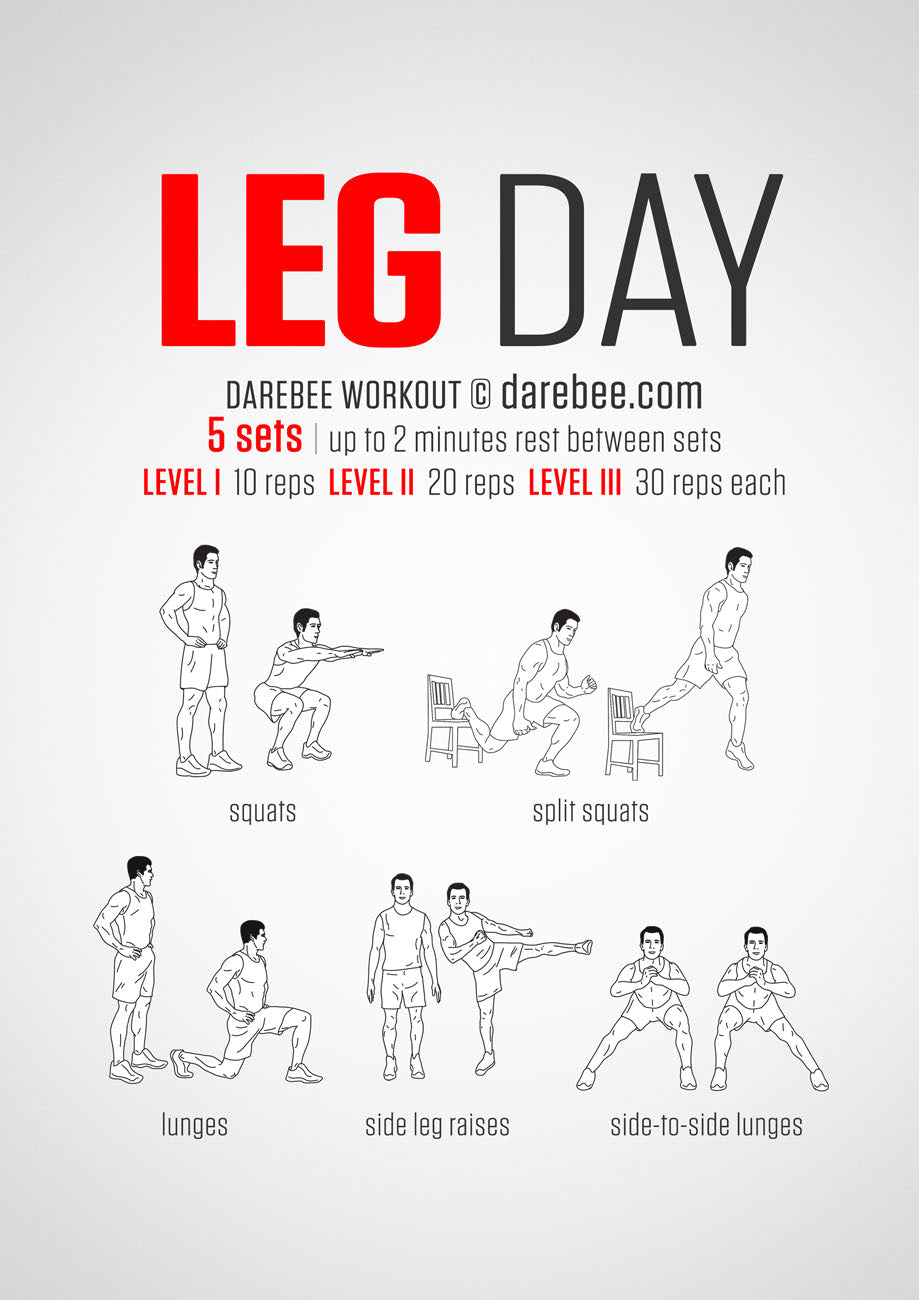
Tip: if you want to put a twist on it to help you maintain the inner thigh strength you need for gripping your horse, then switch out the set of squats at the beginning for plie squats:
When do I do it?
This is a great standalone workout (following a warm up), or you can do it at the end of a strength training session.
Workout Wednesday: Your Day-Before a Show Workout June 24 2015

Why bother?
When you're gearing up for any athletic event, whether you're running a marathon or showing your horse, making sure you take good care of your body is an essential part of your preparation. Here's why a short, easy workout is a good idea for the day before a show:
- You'll prime your body to perform at peak level. Your neuromuscular coordination can begin to deteriorate - or improve - in literally a single day without exercise.
- A light workout will increase the blood flow to your muscles, keeping you loose and flexible.
- You'll relieve the tension that you inevitably get when you're sitting around, because when you're getting nervous, it feels so much better to do something!
How do I do it?
Any light cardio workout will do, but I'm a fan of doing a 20-minute run, with 4-6 bursts of higher-intensity intervals, of around 20 seconds each. However, you could just as easily use a stationary bike or elliptical if you'd prefer a lower-impact workout. Once you're done, do a light cooldown like the one below:
Do you have any 'day before' tips or traditions that help prepare you for a show? Let us know in the comments below or over at our Facebook page.
Workout Wednesday: How to Warm Up Before a Ride June 10 2015
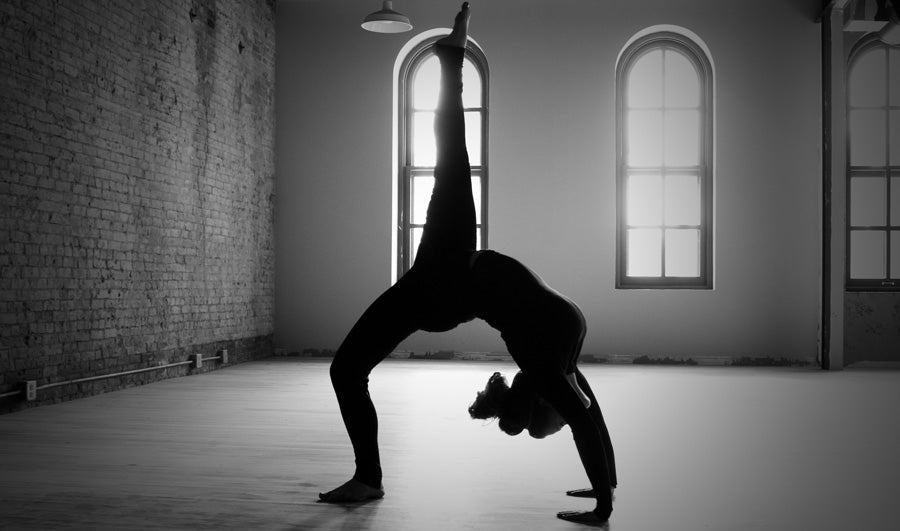
Why bother?
Well that's usually the question when it comes to warming up, isn't it? If you're like me, you skip the warm up part of your workout way too often.
But here's the thing. If you don't have time to warm up, you don't have time to work out.
Of course we all know that warming up is important, especially when it comes to preventing injury by preparing your muscles, ligaments and joints for a ride or a workout. But if you're a serious rider, the other major benefit to warming up is that it gets your cardiovascular system going so that you don't feel like a dopey slug for the first 10-15 minutes of your ride.
What's more, a warm up doesn't have to be as intense as the yoga/parkour shown above (awesome though it is). Here are two great dynamic warm ups to get you started.
How do I do it?
Let's start with an easy, beginner level dynamic warm up. This one just uses 10 simple exercises (with no equipment), for 30 seconds each:
Not too difficult right? And luckily, that's the kind of warm up you could get away with at the barn without looking like too much of a dope. If you want to try a more challenging warm up though, one that will really get your muscles pumping, try this great dynamic warm up from Nerd Fitness:
When should I do it?
Make sure you warm up before any intense exercise, including a hard ride, a run, and any strength training exercises.
Improve Your Riding Reflexes With These Three Exercises May 27 2015
Reflexes might seem like one of those things you're born with, like an outie belly button or an unnatural craving for pop tarts. While there's some truth to this, you can actually train your reflexes so that you respond more quickly when your horse decides to go off script.
To be clear, when we talk about 'reflexes', there are really three 'phases' you need to train:
- Reaction Time: This is more about time spent on your horse (and spent getting to know your horse) than anything else. Put simply - how quickly are you reacting to the signals your horse is sending?
- Response Time: Or how quickly you choose a response to these signals. Practice is a big part of this too, but you can improve your response time at the gym or at home by training your agility and muscle memory.
- Response Speed: Or how quickly your body follows your mental response. This is the biggest area where training can improve your reflexes.
Why bother?
Because every step your horse takes won’t be the same, and having good reflexes will help you adjust in your body and in your bridle to better handle any changes.
If your horse shies or overreacts to anything in the arena, you don’t want to be sitting there confused with your mouth open, following your horse’s lead.
What should I do?
The three exercises we're going to cover today each have benefits for your riding reflexes specifically. The first is a relatively simple side shuffle:
This will add strength and speed to the lateral movement in your lower body. As the gentleman in the video mentions, it's also a great metabolism booster (as are all of these exercises), for 'getting you in those skinny jeans', or if you prefer, jods.
Our next exercise - dumbbell punches- is ideal for improving the strength and speed of your core.
And as an added bonus, dumbbell punches are also a great exercise for your stability and balance.
Last (but absolutely not least) is a speed-rope exercise, which will help with developing quicker and more responsive feet.
How should I do them?
A great way to do all three of these exercises in a single session, with a huge cardio and fat-burning upside, is with a quick, high-intensity Tabata circuit (read about these in more detail here). To do so:
- Do 20 seconds worth of shuffles, then rest for 10 seconds.
- Follow that with 20 seconds of punches, then 10 seconds rest.
- Then 20 seconds of speed rope, followed by 10 seconds of rest.
- Repeat the above circuit 3 more times, for 4 total times through.
Three Pilates Exercises to Improve an Equestrian’s Balance April 21 2015 1 Comment
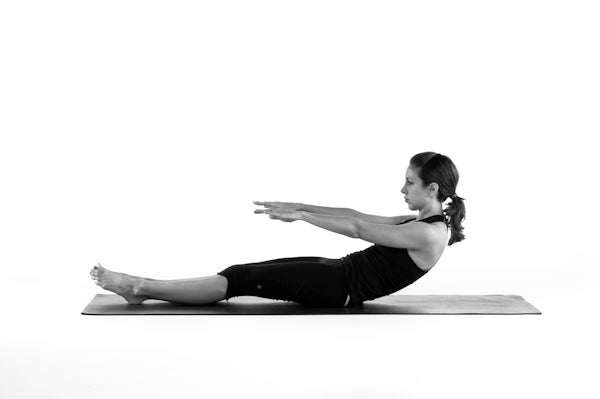
Why bother?
Because having great balance will make you a WAY better rider. Great balance goes a long way to helping you maintain that perfect riding form that we all strive for.
But what can you actually do to improve your balance?
When it comes to your musculature, your balance mostly comes from your core. But when I say core, I mean your whole core, not just your abs, but your obliques, erector spinae and other often neglected muscles in your sides and lower back.
And as countless infomercials have probably told you, thousands of crunches are a pretty ineffective way of strengthening your core.
Enter three great pilates exercises - The Hundred, The Roll Up and The Hip Twist.
How do I do it?
These dynamic exercises are best illustrated through video. Let's start with The Hundred. As with many workout videos, there's a lot of needless preamble, so feel free to skip to about a minute in if you just want to see the form for the exercise.
Complete five up and down beats of the movement ten times, for a total of a hundred (see what they did there with the name of the exercise?)
Next it's time for The Roll Up. Once again you can skip to about 30 seconds in.
Complete ten repetitions of the roll up before moving to the next exercise...
...which is The Hip Twist! Once again, feel free to skip ahead about 30 seconds.
Complete ten repetitions on each side.
These three exercises can be treated as a mini circuit. Do each exrercise one after another. Do three to five sets of the circuit, with 60 seconds of rest between each set.
When should I do it?
These exercises are great as a stand-alone workout, or following a session at the gym.
Workout Wednesday: Why Goblet Squats are Perfect for Riders of All Fitness Levels April 07 2015
Why bother?
Because squatting correctly, even if you’ve done a lot of weight training, is really, really hard. And that isn’t intended in a “you’re doing it wrong” kind of way, but more in a “there are so many ways this exercise could be bad for my knees/back/soul” kind of way.
What’s more, goblet squats are a great exercise for equestrians of all fitness levels. Like all squats, they’re great for strengthening the big muscles in your lower body (like your quadriceps and glutes), and for improving the flexibility in your thighs and ankles. Goblet squats (because of where you hold the weight) are also uniquely suited to strengthening your triceps, shoulders and core, while improving your riding posture.
How should I do it?
- Hold a kettlebell or dumbbell at chest level. If you’re using a dumbbell, hold the top head between your palms, as shown above. Stand with your feet slightly wider than shoulder-width apart.
- Sit back into a squat, bending from the knees and keeping your chest up throughout.
- Keep your knees wide as you go down as low as you can.
- Keep your whole foot on the floor. Widen your stance if your heels start coming up.
- Return to your starting position, and repeat for 3-4 sets of 15-20 reps.
When should I do it?
After a stretch and warm up, goblet squats are a great way to start any lower body workout. As they allow for such a full range of movement, they’re often a great way to warm up for back squats.
Workout Wednesday: The Exercise that Will Strengthen an Equestrian's Hamstrings March 25 2015
Why bother?
Because as an equestrian, using your legs effectively on horseback means squeezing from your hamstrings, NOT your calves! And for many of us, what keeps our lazy horses from pushing up to the bridle are relatively weak hamstrings and glutes. I say relatively because even if your glutes and hammies are stronger than that of your non-equestrian friends, you’re still going to have a tough time keeping your heels down if your rear chain is weaker than your front chain (like your quads).
Single leg deadlifts are a great way to strengthen your rear chain, and can easily be done at home or at the gym. And because they allow you to work one leg at a time (like Bulgarian squats), they also help you improve your balance, and work each leg without favoring or overcompensating on one side.
How do I do it?
- Start with your feet shoulder width apart. You want to make sure that throughout the movement, your whole foot, from heel to toes, stay planted on the ground.
- Lean forward on one foot (either is fine to start).
- Keep that foot planted as you hinge forward, so your upper body moves down as your other leg moves backwards. Keep your back leg straight throughout, but allow for a slight bend in the knee of your planted leg.
- Keep your eyes forward (not down) as your move through the exercise - this will help you keep your back consistently straight. Then return to the starting position.
- Repeat for three sets of 10-12 reps.
Once you’ve got this movement down comfortably, you can add weights. If you’re using a kettlebell, grip it in the opposite hand to the leg you’ll be extending behind you.
When should I do it?
This will depend on your routine, but if you’re looking to do a quick workout (either at home or at the gym), this is an exercise you should do towards the beginning of your movement, as it engages so many of your large muscles. Make sure to do a warmup and some stretching before you start.
Workout Wednesday: Why Bulgarian Split Squats Will Help You Stay Centered When You Ride March 11 2015

Why bother?
If the name of an exercise begins with ‘Romanian’ or ‘Bulgarian’, you probably assume that it’s going to be pretty badass. But in this case, a Bulgarian split squat is actually a relatively safe and simple way of getting into squats.
While traditional squats (or ‘back squats’) are a great exercise for strengthening large muscle groups throughout your body, doing them correctly can take years of practice, and you can put your back at risk if you try to lift too much, too fast. Bulgarian squats, however, have all the benefits of a squat, plus they’re much easier for beginners, and you can even do them at home.
And for equestrians, Bulgarian split squats will strengthen the large muscles in your lower body (like your glutes and quadriceps), while simultaneously improving your balance and strengthening your core, all of which will help you stay centered when you ride. And if you stick to lower (or no) weights and higher reps, you'll be able to improve your lower body strength without busting out of your jods.
How do I do it?
While you can do this exercise with weights (by holding dumbbells or plates), be sure to start unweighted to make sure that you can keep good form, and complete a set without causing pain in your knees or groin. To do a Bulgarian squat:
- Set up by folding a towel or placing an air pad in front of a bench (or chair or coffee table, if you’re doing this at home).
- Standing in front of the pad and away from the bench, rest one foot on top of the bench.
- Descend until your back knee touches the pad, then return to your starting position. As you do so, make sure your front knee finishes in line with your toe. If it goes beyond that point, adjust so your front foot is slightly further forward.
- Repeat for 3-4 sets of 15 reps.
When should I do it?
Be sure to do these after some cardio and dynamic stretching to warm up your muscles, especially your hip flexors.
Image from Lifehack.org
Workout Wednesday: Why Scapular Wall Slides are Great for Riding Posture March 04 2015
Why bother?
These may sound hard and painful but they’re actually pretty easy. And if you’ve ever worried that you look a little bit like Donkey Kong when you ride, then wall slides will be a great exercise for you. They’ll help strengthen your upper back, which will prevent your shoulders from rounding forward as you ride and leave you with terrific riding posture.
How do I do it?
-
Begin with your butt, shoulders and knuckles against a wall, with your hands in a ‘high five’ position and your elbows bent at 90 degrees (position A).
-
Maintaining these points of contact, slide your hands up over your head (position B).
-
Return past your starting position, sliding your elbows down towards your sides as far as they can go.
-
Repeat for 3-4 sets of 15 reps.
When should I do it?
Because all you need to do a scapular wall slide is a wall (duh), they’re a great standalone exercise. They’re also a great way to follow a pushup workout, as they’ll help counter the training of your chest.
Workout Wednesday: Equestrians of the World, Meet Dr. Tabata February 25 2015
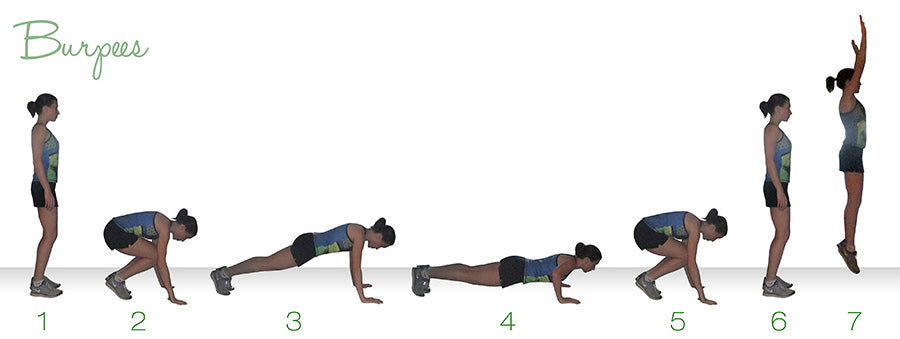
You’ve probably heard of burpees. You may or may not have heard of the Tabata protocol. And if not, I’m both proud and sorry to introduce you to it, because you will definitely have a love/hate relationship with this form of high intensity exercise, and its creator, Dr. Tabata.
Why bother?
You’re busy. You want to get a great cardio and muscular workout. And you want to get a greater benefit from four (yes four) minutes of intense exercise than you would during an hour-long moderate workout, right?
Then yeah, you’ll love Tabata. Or, at least, you’ll love what it does for you.
Tabata is a highly efficient form of high intensity interval training, which involves 20 seconds of intense activity, followed by 10 seconds of rest, repeated eight times. That’s it. Four total minutes, and at the end, you’ll have done more for your aerobic and anaerobic fitness than you would in a sixty minute bike ride.
For equestrians, an increase in your anaerobic capacity will help when it matters most - like if you are riding are particularly strong horse and you're feeling that 60 minute "warm up" (calm down) when you hit the second direction in the ring
How do I do it?
We’ve all done burpees before, whether in gym class, bootcamp classes, or flashbacks/nightmares. But the reason they feel so exhausting is the same reason as they’re great to do, they’re legitimately a full body body workout, combining a pushup, with a squat, with a jumping jack.
To do a burpee well, set up in a standing position. From there:
- Bend down and place your hands in front of you, slightly wider than your feet.
- Jump back into a plank position. As you jump back, make sure you keep your core contracted.
- From there, drop into a full pushup so your chest touches the floor.
- Pop back up to your feet, and jump into the air, like in a jumping jack.
To Tabat-ify this workout, just do 20 seconds of burpees followed by 10 seconds of rest. You can either sync it with a stopwatch, or use a free High Intensity Interval Training app to get the timing right.
When should I do it?
If you’re doing any strength training, be sure to do this workout afterwards. You can also do a Tabata workout as a quick, stand alone workout. If you do, however, make sure that you start with a quick dynamic warm up before getting started.Workout Wednesday: Strengthen Your Butt and Hamstrings with Glute Bridges February 18 2015
Why bother?
Because a strong, round butt is the equivalent of high cheekbones for your lower body. Unlike your face cheeks, though, your south-of-the equator cheeks can be sculpted with exercise.
Without a doubt, one of the best exercises for strengthening and toning your glutes is the glute bridge. This exercise also has a range of great benefits for riders:
- Firstly, a having a strong butt will help you roll in your knees and thighs as you ride, which helps maintain the desired saddle seat leg shape throughout a ride.
- Secondly, glute bridges are great for strengthening your hamstrings, which for many of us, are weaker than our quads and the other muscles in our ‘anterior (front) chain’.
- Finally, glute bridges help improve core stability, and particularly your lower abs, which will help improve your upper-body riding posture.
How do I do it?
- Lie down on your back with your knees bent at 90 degrees.
- Push down from your heels to lift your butt off the floor, until your back is aligned with your upper legs.
- Repeat for four sets of 18-25 reps.
To do this exercise safely, keep your butt and core tight as you push up, and keep your movements slow.
If these glute bridges are too easy, progress to single leg glute bridges and weighted hip thrusts.
When should I do it?
Do it on leg day, after you’ve done any weighted exercises, and before any plyometrics or core exercises.
Image from top.me
Workout Wednesday: Yeah, You Should Do More Pushups February 10 2015
Why bother?
You and I both know that we should do more pushups. Yes, they're really boring. Nobody is going to come up to while you're doing them and ask how long you've been doing parkour. And yeah, I know your mom does them. But they're the brussels sprouts of a decent workout routine - they're not going to make you a whole lot of friends, but they are very, very good for you.
The main muscle groups you'll work with push ups are your pecs, triceps and anterior deltoids - the front of your shoulder muscle. For riders, (especially in equitation), good arm and shoulder strength is a puzzle piece of great posture, and therefore, good form. What's more, using bodyweight exercises and calisthenics (rather than weights) to help strengthen your chest and shoulders will help you avoid overtraining your front - which can lead to rounded shoulders and a 'hunched' look while you ride.
And a HUGE bonus with high intensity interval training circuits like the one below is that they'll not only help with your strength, but they're a really efficient way to do your cardio. How efficient? Over 10 times more, according to one famous study.
How do I do them?
Seeing as last week's plank circuit from Neila Rey hopefully turned you into a sweaty, quivering mess, we're going back to the well with her Riddick workout.

When you're crying to the gym mat/carpet on the third set of these, remember that to keep good form during pushups, you should:
- Start with your hands slightly wider than shoulder width apart and your back straight (don't let it sag).
- Keep your head facing slightly forward and your butt and abs clenched. This will help keep everything in line.
- Keep your elbows from flaring out as you do pushups. They should be at angle of about 20-40 degrees from your body.
When should I do them?
The great thing about a circuit like this is that you can do it pretty much whenever (and wherever) you want. If you're looking to incorporate the circuit into a regular workout, then do it after you've finished doing any weights, but before you've worked on your core.
Workout Wednesday: We All Hate Planks, But Here's Why You Should Do Them February 03 2015
Why bother?
Unless you’re a total masochist, you hate doing planks. Everything seems fine at first, then you start trembling like a leaf. Soon you’re a sweaty mess, and everything hurts. You check your timer. 10 seconds gone. Why do I do planks again?
Because they're one of the best exercises for equestrians. Here's why:
- They’re great for your balance and posture.
- They’re great for the flexibility in your shoulders, hamstrings, and even the arches of your feet.
- They’re great for your core, but they also work your thighs, butt, shoulders and back, all of which will improve your riding form. What’s more, engaging your core while your shoulders and glutes are also engaged helps you get the most out of your core workout.
How do I do it?
Good question, friend. Now that you’re in the planking mood, try this crazy, five minute plank workout from Neila Rey.
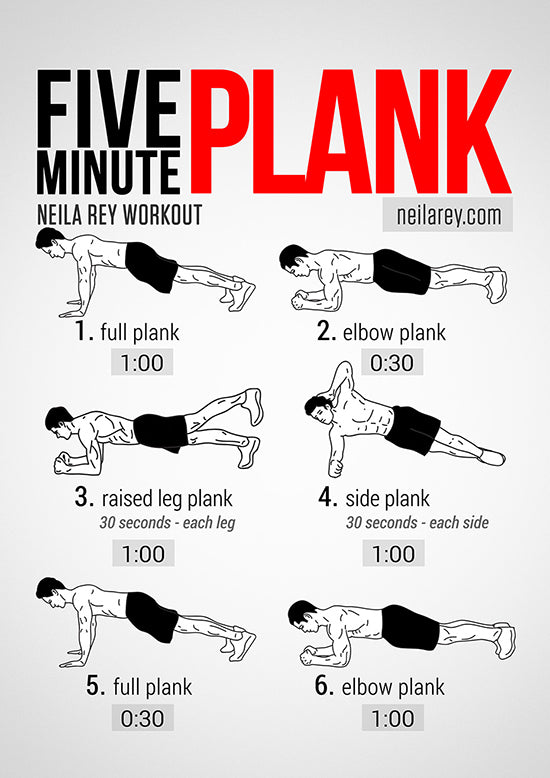
To make sure you get the most out of your planks, and stay safe while you're doing them, make sure you:
- Keep your core tight.
- Keep your shoulders above your elbows/hands.
- Keep a straight line from your shoulders to your heels. Don't let your butt sag, and don't go downward dog.
When should I do it?
As with any core exercises, it's best to do them either as a stand-alone circuit, or after any weightlifting or plyometrics. That way, your core will be strong during your other exercises like your squats, pushups, split jumps, etc. Then you can blast your core into jelly with this plank circuit, and finish your workout with some supermans and some light cardio or stretching.
Workout Wednesday: Boost Your Muscular Endurance With Split Jumps January 27 2015
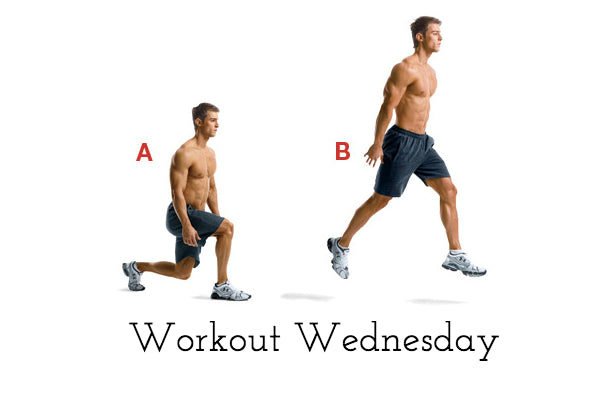
Why bother?
During a long riding lesson, your thighs and glutes are probably the first parts of your body that start to feel like jelly. And while you might assume that the best way to strengthen your trunk is to get to the gym and hit the squat rack, a powerlifting routine isn’t likely to help much with your riding. Instead, you should really focus on your muscular endurance, so you can get through a long class, or even a 30 minute lesson, without developing jelly legs.
Plyometrics like split jumps (which are a part of the Spartacus Workout) are a great way to build your muscular endurance. Split jumps work your glutes, your thighs, and a bunch of the stabilizing muscles in your core and lower body, and they’re just the kinds of exercise that will strengthen your trunk for riding, without adding a ton of bulk to your legs.

How do I do it?
- Stand like you’re about to dip down into a lunge - one foot forward and one foot back, with your knees slightly bent.
- Jump up, swinging your back leg forward and your front leg back, so they end up opposite to your starting position.
- Land with bent knees and dip down into a full lunge. Keep your upper body straight as you do so. Make sure your front knee doesn’t cross over your front toe as you lunge.
- Repeat for four sets of 12-15 reps, with 1-2 minutes of rest between sets.
When should I do it?
This really depends on your routine, but bear in mind that plyometric exercises like split jumps will turn you into a quivering heap of jelly. Given that, it’s best to do these towards the end of your workout, or as a stand-alone exercise.
Workout Wednesday: Improve Your Riding Posture With Supermans January 21 2015
Why bother?
We all know that trying to ride with a weak core will leave you flopping around like a wet noodle. But for many of us, strengthening our core usually means crunches, planks, and some leg lifts. But even if you have a teenage mutant ninja turtle style muscle gut, your core is only going to be as strong as its weakest part, which for many of us, is our lower back.
And if you want to strengthen your lower back, adding Supermans to the end of your core routine can be a great way to start.
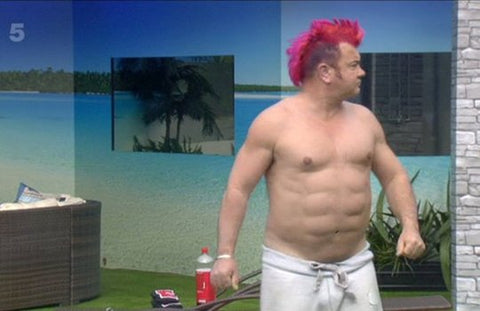
|
How do I do it?
- Lie with your stomach on the ground, with your arms extended and your legs straightened.
- Keep your core tight and use a smooth motion to raise your legs, arm and chest off the ground.
- Hold this for five seconds before returning to your starting position.
- Repeat for four sets of 12-15 reps.
When should I do it?
Try adding Supermans to the end of your regular core circuit - they’ll help you stretch out your core to finish your workout.
Superman image from Wikipedia.

